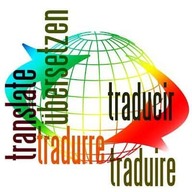Placa Catalunya: The Vibrant Heart of Barcelona
Plaça Catalunya, the bustling epicenter of Barcelona, is much more than a city square—it’s a lively crossroads where history, culture, shopping, and local life converge. Spanning five hectares, this iconic plaza links the old city (Ciutat Vella) and the modern Eixample district, making it a favorite meeting point for both locals and visitors. Whether you’re drawn by its impressive architecture, vibrant atmosphere, or its role as a gateway to Barcelona’s most famous streets, Plaça Catalunya is an essential stop for anyone exploring the Catalan capital.
History of Placa Catalunya
Plaça Catalunya’s origins trace back to the mid-19th century, when Barcelona’s medieval walls were demolished to accommodate a rapidly growing population and new urban ambitions. The square was first conceived in 1859 as part of the Rovira plan, but official approval didn’t come until the 1888 Universal Exposition. Major urbanization began in 1902, and the square took its current form between 1925 and 1927 under the direction of architects Pere Falqués, Puig i Cadafalch, and Francesc de Paula Nebot. Officially inaugurated by King Alfonso XIII in 1927, Plaça Catalunya quickly became a symbol of Barcelona’s modern identity, adorned with sculptures by renowned artists and surrounded by luxury hotels, bars, and theatres—many of which have since disappeared but remain alive in local memory.
Dining Near Plaça Catalunya
The area around Plaça Catalunya is a paradise for food lovers. Historic cafés like Café Zurich, a gastronomic symbol of the city, offer a taste of Barcelona’s past and present. The square is surrounded by a variety of dining options, from classic tapas bars to international eateries and upscale restaurants. For a panoramic meal, the cafeteria on the ninth floor of El Corte Inglés department store offers both delicious cuisine and sweeping views of the square below.
Views and Attractions
Plaça Catalunya is renowned for its striking fountains, lush green spaces, and public sculptures representing artistic movements such as Noucentisme and Neo-Classicism. Notable works include “La Deessa” by Josep Clarà and the Monument to Francesc Macià by Josep Maria Subirachs. The square’s benches and shaded areas make it ideal for people-watching, while its lively atmosphere is amplified by the constant flow of pedestrians and flocks of pigeons.
For shoppers, Plaça Catalunya is a gateway to Barcelona’s premier retail destinations. The famous El Corte Inglés department store offers everything from fashion to gourmet foods, while the square’s proximity to Passeig de Gràcia and La Rambla means world-class shopping and entertainment are just steps away.
Location and Accessibility
Perfectly positioned at the junction of Ciutat Vella and Eixample, Plaça Catalunya is the city’s main transportation hub. It connects nine major streets, including the iconic La Rambla and Passeig de Gràcia, and serves as the central node for metro lines, city railways, buses, airport shuttles, and tourist coaches. This accessibility makes it the ideal starting point for exploring Barcelona’s diverse neighborhoods and attractions.
Placa Catalunya Summary
Plaça Catalunya stands as the dynamic heart of Barcelona, blending historical significance, artistic flair, and urban energy. Whether you’re seeking culture, cuisine, shopping, or simply a place to soak in the city’s vibrant spirit, this iconic square is an unmissable destination for any visitor to Barcelona.
The most important Barcelona Plaças (Squares) you need to know:

Coasteering Sant Feliu de Guixols!
Discover the Costa Brava’s wild side—explore coves & crystal-waters.


